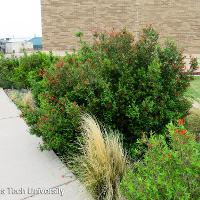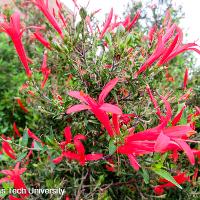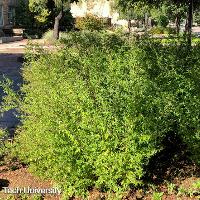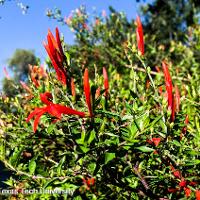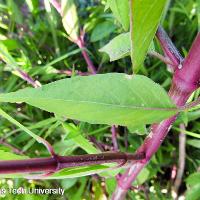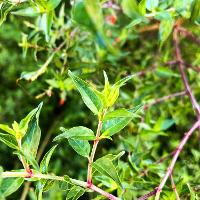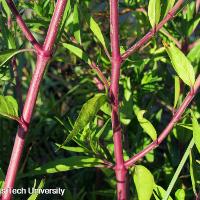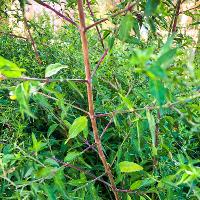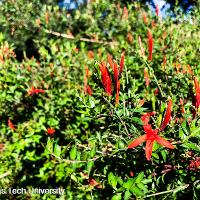Flame Acanthus, Cohilla Honeysuckle
Anisacanthus quadrifidus var. wrightii
Natives
The orange, trumpet-shaped flowers of flame acanthus serve as an attractant for butterflies and hummingbirds, while its tolerance of drought, heat, and a range of soils make it an attractive choice for people who don't want to spend their time fighting the climate of West Texas.
(Detailed plant information can be found at the bottom of the page.)
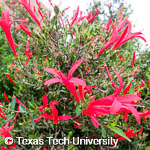
Anisacanthus quadrifidus var. wrightii Photo Gallery
Anisacanthus quadrifidus var. wrightii Plant Information
| Classification | |
|---|---|
| Scientific Name: | Anisacanthus quadrifidus var. wrightii |
| Common Name: | flame acanthus Cohilla honeysuckle |
| Family: | Acanthaceae |
| Suggested Uses: | perennials, beds & borders, natives |
| Characteristics | |
| Plant Form: | upright |
| Height: | 3 - 4 feet |
| Spread: | 3 - 5 feet |
| Foliage: | simple leaves are long, narrow, opposite, light to medium green, and somewhat sparse medium-textured foliage |
| Flower: | orange, 2" trumpet-shaped flowers are mostly solitary, occasionally in spikes |
| Bloom Period: | Summer - Fall |
| Environment | |
| Sun: | light shade |
| Water: | low water requirement drought-tolerant |
| Soil: | prefers well-drained soil adaptable soil range tolerates alkaline soils |
| Heat Tolerance: | high heat tolerance |
| USDA Zone: | zones 7 - 10 (roots) zones 8 - 10 (stems) |
| Native Range: | Texas Southwestern US Mexico |
| Care | |
| Maintenance: | prune back near to ground for cold season; stems are not cold hardy shear occasionally during growing season to combat legginess and irregular, potentially messy form potential to self-seed |
| Wildlife: | butterflies hummingbirds |
| Additional Notes: | salt-tolerant |
TTU Plant Resources
-
Address
Texas Tech University, Department of Plant and Soil Science, Box 42122, Lubbock, TX 79409 -
Phone
806.742.2838 -
Email
Melanie.Jackson@ttu.edu

